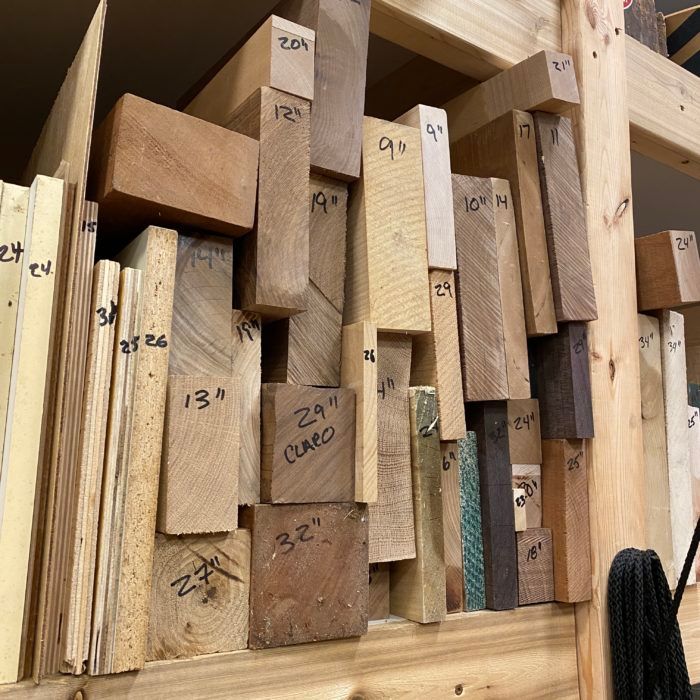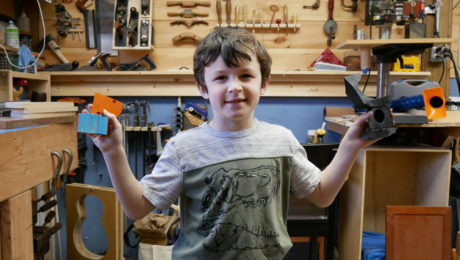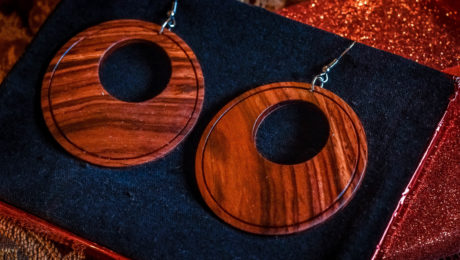Wood hoarding
If, like Vic Tesolin, you can't help keeping all those scraps around, it helps to have a system.
Are you a wood hoarder?
When I finish building a project, I’m always left with pieces of wood: a small pile of offcuts, wood that didn’t make the cut, and extra wood that I bought just in case. I usually add about 20% to my cutlist for any little surprises. I buy wood for each individual project because I don’t have the space to have lifts of wood delivered. I also like going to my local lumber shop to browse the racks and pick the boards that speak to me.
So what to do with the extra wood bits? If you’re like me, the thought of throwing away even the smallest chunk of wood can lead to an internal struggle.
What if I need that 1-in.-long offcut for something?
Maybe that small bit would make a nice pull on the lathe?
What if I resaw that small bit of wood to make inlay panels?
I seem to go through this cycle after each project I complete, which has me keeping everything that isn’t split or full of knots that make it unusable. Then, in about six months’ time when I start to run out of wood storage space, I have to cull the piles. So how do I decide what stays and what goes? I usually start with the rule that nothing shorter than 8 in. stays … unless it’s figured or special in some way. That normally gets rid of three of four pieces and I feel like I’ve accomplished something. Usually in another two weeks I get frustrated with the piles again and decide to increase my threshold. I decide that the cutoff for keeping the wood is 12 in.
Wood doesn’t grow on trees so I value every scrap of it. I needed to come up with a way to keep the pieces I would reasonably use and send the rest to the burn pile. I’m fortunate to have a garage attached to the house that doesn’t get used for cars. In the back of the space are floor-to-ceiling cubbies that measure 3 ft. deep and are perfect for short pieces.
So here is my new system:
If it’s 3 ft. or shorter, it goes into the cubbies standing on edge. I also mark the length of the piece on the end so I don’t have to pull everything out to know what’s there.
If it’s 3-6 ft. long, it gets stored vertically against the wall.
If it’s longer than 6 ft., it also goes up against the wall but not mixed with the shorter stuff because then the longer pieces will hide the short stuff.
I also dedicated one cubby to small stuff that would be great for turning (either for myself or a turning friend). I’m not a wood turner per se but I can make round and cylindrical objects from time to time when required.
Plywood also has its place. I have dedicated a cubby for the smaller chunks of plywood, and I store the bigger pieces vertically for easy viewing.
Sorting wood can be a hobby in itself and personally, I’m trying not to get into that. I prefer to keep my hobby to the one I truly enjoy — working wood. However, I recognize that unorganized wood storage can create stress and frustration, which is the last thing I want when I plan for a good day in my shop. Finding the lumber I need is all part of the workflow, and just like my shop and tools, I want it to be effective and efficient. So, I’m feeling better with my new system. I think it will help to keep the wood in front of my eyes as opposed to languishing in piles and boxes. The true test will be how it works in 6 months or so.
 |
|
 |
|
 |
Fine Woodworking Recommended Products

DeWalt 735X Planer

Ridgid R4331 Planer

AnchorSeal Log and Lumber End-Grain Sealer























Comments
Is that a stock photo with imperial lengths marked on the off-cuts, or is Vic falling off the metric wagon (https://www.finewoodworking.com/2019/11/12/vic-tesolin-weighs-in-on-the-metric-debate). Stay strong!
I have to laugh. Before I ever got into woodworking (o.k., o.k., besides the small lidded plywood box I made, to store I wasn't quite sure what in, when I was 16 in 1957), but a couple/three years after I finished my three year stint in the army, I marveled at a friend of mine having stored a piece of flame maple in a dresser drawer for ten years to make a violin from. (He didn't even play the instrument.) Then, after learning how to play guitar and having become The Guitar Doctor for Stars Guitars in San Francisco [made "House Calls" to concerts and recording studios fixing things on the spot], when I left in mid 1980, I took a roughly 1'x1'x3' stash of instrument quality "Off-Cuts".(Bubinga, Koa, Purpleheart, Wenge, figured Maple, etc.) Still have 'em, 'cept for a couple/three handgun grips that is. Now, in my dotage, I think I'll finally put 'em to good use. Oh, yes, there's a lot more than just that one open top wooden container of special scrap/off-cuts, but that particular one has been waiting (and drying) for special projects. I'd better get around to it. I had one a friend gave me once, a real, physical, beer coaster one, but I lost it. Then another friend sent me this one.
Log in or create an account to post a comment.
Sign up Log in